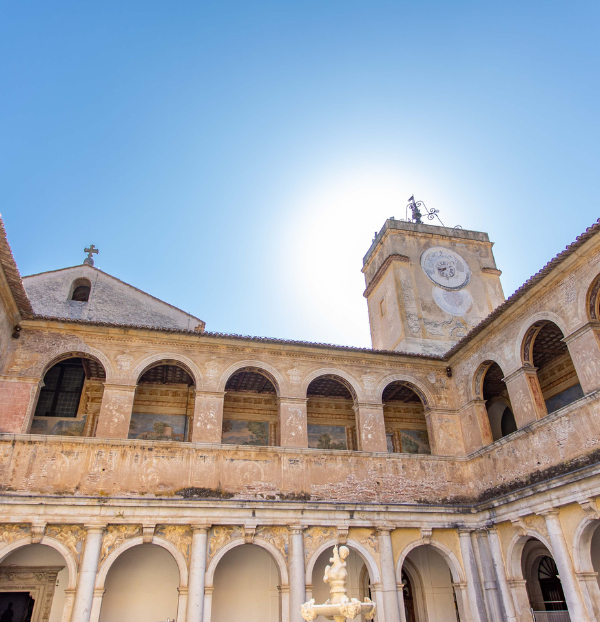-
Municipalities
Padula
-
Address
Viale Certosa, 1, 84034 Padula SA
-
Telephone
0975 196 6359
-
Website
https://certosadipadula.org/

Description
The Charterhouse of Padula is the largest monastic complex in Southern Italy, as well as one of the most interesting in Europe for its architectural magnificence and abundance of artistic treasures. Since 1998 the Certosa has been included in the UNESCO World Heritage List and represents one of the contemporary places of the Ministry of Culture.
Its construction began in 1306 by will of Tommaso Sanseverino, count of Marsico and lord of Vallo di Diano, and continued with various expansions and renovations until the 19th century. Few elements remain of the ancient layout of the Certosa, including the church door, dated 1374, and the cross vaults of the church itself. The most significant transformations date back to the period following the Council of Trent (mid-sixteenth century).
During the French decade, in 1807, the Carthusians left Padula, as they were deprived of their possessions in Vallo, Cilento, Basilicata and Calabria. The rich furnishings and all the artistic and book heritage were almost entirely lost and the Certosa experienced a state of precariousness and abandonment.
Subsequently the Certosa was declared a national monument in 1882 and taken over by the Superintendence for Architectural Heritage of Salerno. Restoration work began in 1982.
One of the treasures of the structure is certainly the Library, a vast room that housed tens of thousands of books, illuminated manuscripts, of which only a very small part remains today, around two thousand volumes.
Furthermore, the Certosa di San Lorenzo hosts, in some of the evocative monastic cells, the collection of contemporary art gathered in the three-year period 2002-2004 thanks to the three editions of the international exhibition "Le Opere e i Giorni", created by Achille Bonito Oliva. The triennial saw the participation of internationally renowned artists and the creation of works inspired by the following themes: the Word, the Precept and Vanitas.
Gallery




